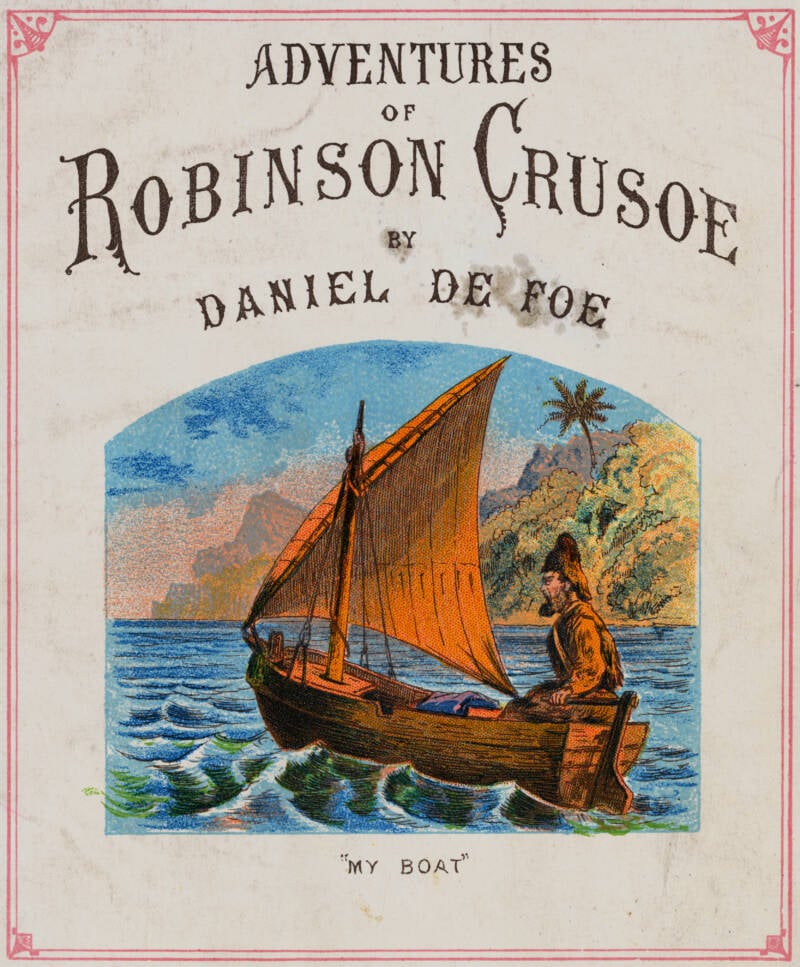What happened on this day in history: The guillotine is used for the first time, Ella Fitzgerald is born in Virginia, and more.
1719: Robinson Crusoe Is Published

Bettmann/Getty ImagesA cover for The Life and Strange Adventures of Robinson Crusoe from circa 1900.
The Life and Strange Adventures of Robinson Crusoe by Daniel Defoe is published. The story of a shipwrecked sailor who spends 28 years on a deserted island, the book was originally published with “Robinson Crusoe” as the author, leading many to believe that it was a true story. Since its publication, the popular book has been printed in more than 700 editions.
1792: The Guillotine Is Used For The First Time
The guillotine is used for the first time in Paris, France. The beheading device was developed as a “humane” way to kill criminals, and as a way to spare the executioner from difficult executions with a sword. The first victim of the guillotine was Nicolas-Jacques Pelletier, who had been found guilty of robbery and murder, and his execution was carried out by executioner Charles Henri Sanson, who would also oversee the execution of Queen Marie Antoinette and King Louis XVI. France continued to use the guillotine until 1977.
1917: Ella Fitzgerald Is Born

Anthony Bruno/Michael Ochs Archives/Getty ImagesElla Fitzgerald poses for a portrait, circa 1945.
Ella Fitzgerald is born in Newport News, Virginia. A jazz singer known as the “First Lady of Song,” Fitzgerald sang alongside jazz greats like Louis Armstrong and Duke Ellington, and produced popular songs like “Cheek to Cheek” and “It Don’t Mean a Thing (If It Ain’t Got That Swing).” She was the first Black woman to win a Grammy Award — she won a total of 13 Grammys during her career — and sold more than 40 million albums.
1990: The Hubble Space Telescope Goes Into Orbit
Launched by the shuttle Discovery, the Hubble Space Telescope moves five miles per second while orbiting more than 300 miles above the earth. To date, it has captured more than one million observations including the birth and deaths of stars and far-off galaxies.
2015: Kathmandu Earthquake Strikes
Kathmandu earthquake strikes in Nepal, killing nearly 9,000 people and injuring 20,000. The earthquake’s magnitude was between 7.8 and 8.1. The earthquake triggered an avalanche on Mount Everest, killing 22 people. Hundreds of thousands of Nepalese lost their homes and villages. Several important historical and religious buildings were destroyed as well. Following the initial quake, aftershocks terrorized the region, killing more people and destroying what remained. In total, $3 billion was raised to help fund rescue efforts, rebuild, and care for those who had lost their homes in the earthquake.



